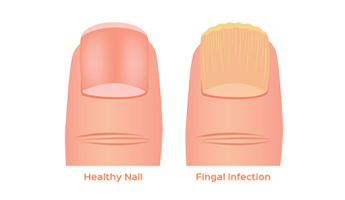
Have your nails changed colour, shape or size recently? You may have picked up a fungal nail infection!
Medically known as onychomycosis, fungal nails affect 1 in 10 Australians, appearing more commonly in the elderly. This may result in ingrown pain, unsightly nails and therefore, a lack of confidence to wear the shoes you love.
Fungal nails are mainly caused by many types of fungi, the most common being dermatophytes. These fungi feed on the keratin in your nails, resulting in the thick, discoloured and crumbling look. Other factors, such as immune system strength, blood circulation status and some chemotherapy medications may also increase your risk of fungal infections.

There are four main treatment options for fungal nails
Baltazar et al. 2015 reported that patients who were unresponsive to other standard treatments, including oral antifungals responded to PACT.
Watanabe et al. follows two case studies PACT was successful in restoring nail function.
Donnelly et al. reports that PACT has demonstrated conclusively that dermatophytes (main cause of fungal nails) and other fungi can be effectively killed with photodynamic action.